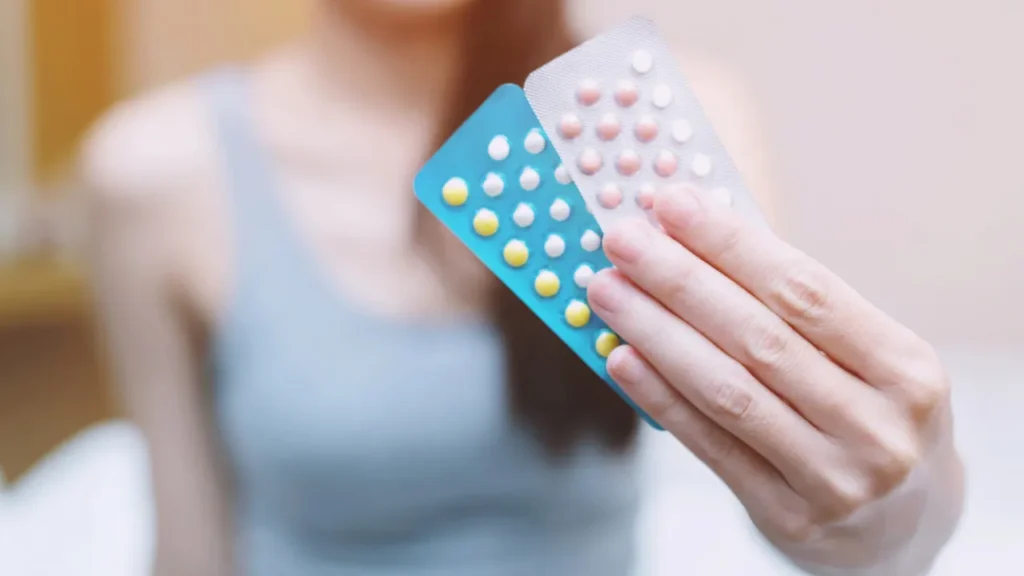Due to its numerous health advantages, the white dead-nettle flower (Lamium album L.) has long been utilized in herbal therapy. This plant, which is native to Europe and Asia, is frequently confused with stinging nettle (Urtica dioica) because of how similar they look, however, the latter differs in having stinging hairs. This article seeks to give readers a thorough grWhite Dead-Nettleasp of the white dead-nettle flower’s characteristics, health advantages, recommended dosage, possible side effects, drug interactions, and the most responsible ways to use it.
You May Also Like:
NutriRise Ashwagandha Root Capsules Reviewed: A Leading Herbal Stress Support Product
A Nootropic Herb for Cognitive Enhancement: Discover Bacopa Monnieri Benefits and Side Effects
White Dead-Nettle: Benefits, Dosage, Side Effects, Drug Interactions, And Other Important Information is an original (NootropicsPlanet) article.
The Nature of White Dead-Nettle
White dead-nettle is a perennial herb that can reach a height of 1 meter and it is a member of the Lamiaceae family. It is distinguished by its square stem and opposite pairs of heart-shaped, toothed leaves. This plant has white tubular flowers in clusters, resembling those of the mint family. Among the many bioactive substances found in white dead-nettle flower are flavonoids, phenolic acids, iridoid glycosides, and essential oils.
Health Benefits of White Dead-Nettle
- Antioxidant and Anti-inflammatory Properties:
Due to the abundance of flavonoids and phenolic acids in white dead-nettle flowers, they have both anti-inflammatory and antioxidant qualities. These substances can scavenge free radicals that produce oxidative stress and limit the formation of pro-inflammatory mediators like nitric oxide (NO) and prostaglandins. The white dead-nettle flower’s anti-inflammatory and antioxidant properties may help manage a variety of inflammatory disorders and guard against oxidative cell damage.
- Microbiological Activity:
The antibacterial qualities of white dead-nettle flower have been utilized traditionally to combat many infections, such as bacteria, fungus, and viruses. The essential oil components of white dead-nettle flower and other bioactive substances, like flavonoids and phenolic acids, are responsible for the plant’s antibacterial properties. Given the rise in antibiotic resistance, the plant’s antibacterial capabilities may be helpful in treating and preventing illnesses.
- Aid in Digestion:
In the past, people have relied on the white dead-nettle flower to treat digestive problems like indigestion, diarrhea, and constipation. It may improve gastrointestinal health because of its anti-inflammatory and antioxidant qualities as well as its capacity to control stomach motility. White dead-nettle flower may also improve digestive health by preserving the balance of the gut bacteria.
- Women’s Wellness:
Women’s health difficulties, such as menstrual discomfort, menopausal symptoms, and heavy monthly bleeding, have traditionally been treated using white dead-nettle flowers. The plant’s astringent action may lessen excessive menstrual flow, while the plant’s anti-inflammatory and analgesic characteristics may help ease menstrual pain. White dead-nettle flower may also include phytoestrogenic qualities that can lessen menopausal symptoms including hot flashes and mood swings.

Chemistry of White Dead-Nettle
Numerous bioactive substances found in white dead-nettle flower are what give it its medicinal properties.
1. Flavonoids: This class of polyphenolic chemicals has anti-inflammatory and antioxidant effects. In the white dead-nettle flower, flavonoids like quercetin, kaempferol, and apigenin are frequently observed.
2. Phenolic acids: These substances also have anti-inflammatory and antioxidant properties. The main phenolic acid present in the white dead-nettle flower is rosmarinic acid.
3. Iridoid glycosides: This group of secondary metabolites may have analgesic, anti-inflammatory, and antibacterial effects. The white dead-nettle blossom contains the conspicuous iridoid glycoside lamalbide.
4. Essential oils: White dead-nettle flower’s antibacterial effect is brought on by its volatile oils. Terpenes like limonene and linalool as well as other aromatic substances like eugenol are some of the most typical constituents of essential oils.
Physiological Mechanisms of Action of White Dead-Nettle
The medicinal properties of white dead-nettle flower are mediated by multiple physiological systems, including:
1. Inhibition of pro-inflammatory mediators: White dead-nettle flowers contain flavonoids and phenolic acids that inhibit the synthesis of pro-inflammatory mediators including nitric oxide and prostaglandins, hence lowering inflammation in the body.
2. Scavenging free radicals: White dead-nettle flower’s antioxidant qualities work to counteract dangerous free radicals, minimizing oxidative stress and cellular damage.
3. Disruption of microbial cell structures: The essential oil components and other bioactive substances in white dead-nettle flower are principally responsible for the antibacterial effect of this plant. These compounds damage the cellular architecture of bacteria, fungi, and viruses, preventing them from growing and multiplying.
4. Modulation of gut motility: White dead-nettle flower can affect gut motility, assisting in the relief of digestive problems like constipation and diarrhea.
5. Phytoestrogenic activity: Compounds in white dead-nettle flowers that mirror the actions of estrogen may help to lessen menopausal symptoms.


Optimal Dosage of White Dead-Nettle
The ideal dosage of white dead-nettle flower depends on an individual such as a person’s sensitivity, health issues, and the type of supplement. Although there is little research on the best dosage for white dead-nettle flower, conventional herbal medicine methods can offer recommendations.
There are several ways to take white dead-nettle flower, including teas, tinctures, and capsules. You can soak 1-2 tablespoons of dried flowers in a cup of boiling water for 10-15 minutes before drinking up to three cups of white dead-nettle flower tea per day. Another method is taking tinctures of 2-4 milliliters (about 40–80 drops) up to three times a day. Follow the manufacturer’s directions when taking capsules or tablets, and ask a healthcare provider for more specific advice.
It is crucial to begin with the lowest dosage advised and then gradually raise it as needed while keeping an eye out for any negative effects. Before using supplements containing white dead-nettle flower, talk to your doctor, especially if you’re pregnant, nursing, or on any medications.
Side Effects of White Dead-Nettle
Moderate ingestion of white dead nettle flower is typically regarded as harmless. However, overconsumption and individual sensitivity may result in undesirable effects, such as:
- Intestinal disorders
Constipation, gas, diarrhea, and stomach cramps may result from consuming too much white dead-nettle flower. It is advised to start with a low dosage and gradually raise it as needed to reduce the possibility of these adverse effects.
- Allergies
White dead-nettle flower allergies are possible in those who have previously experienced allergies to Lamiaceae family plants like mint or oregano. Hives, itching, swelling, and breathing difficulties are possible symptoms. If you think you may be allergic to white dead-nettle flower, stop using it immediately and seek medical advice.


Potential Substance Interactions with White Dead-Nettle
Despite being generally regarded as safe, white dead nettle flower may interact with a number of drugs and chemicals, such as:
- Anticoagulants and Antiplatelet Drugs
Due to the flavonoid concentration of white dead-nettle flowers, they may have blood-thinning effects. Supplements containing white dead-nettle flower should be used with caution if anticoagulant or antiplatelet drugs like aspirin or warfarin are also being taken, as this may increase the risk of bleeding.
- Drugs for Lowering and Raising Blood Pressure
Due to its anti-inflammatory and antioxidant qualities, white dead-nettle flower may have a moderate blood pressure-lowering impact. If you are using blood pressure drugs, talk to your doctor first before consuming supplements containing white dead-nettle flower, since they might interfere with how well they work.
Best Responsible Uses of White Dead-Nettle
- Quality Assurance
When choosing a white dead-nettle flower supplement, give preference to items from reliable producers who follow stringent quality control guidelines. This guarantees that the product is free of impurities and that the content of bioactive compounds is as stated on the label.
- Individualized Dosage
Individualize the dosage of white dead-nettle flower based on your goals, age, weight, and health. To reduce potential negative effects, limit usage.
- A Healthy Diet
White dead-nettle flower should not be relied upon as a complete source of nutrients, but rather as an addition to a healthy, varied diet. Make sure you’re getting enough of the other nutrients you need to maintain your overall health and well-being.
- Track Your Sensitivities and Allergies
When utilizing white dead-nettle flower, be cautious of any allergies and sensitivities to plants in the Lamiaceae family. Stop using immediately and seek medical advice if symptoms appear.
White Dead-Nettle Flower:
Conclusion
In short, Lamium album L., also commonly known as white dead-nettle, is a versatile herb recognized for its various uses in traditional medicine and culinary applications. White dead-nettle is believed to help in preventing cells from oxidative damage. The plant also has a certain level of antibacterial capabilities which can help in preventing illnesses.
Furthermore, white dead nettle relieves women’s health difficulties such as menstrual pain, heavy monthly bleeding, and such. The flower of the plant contains phytoestrogenic qualities that can ease the discomfort. If you are seeking to use white dead nettle as a nutritional supplement, be sure to seek advice from a medical expert to ensure their safety and wellness. You need to approach its usage with caution too.


References:
- Lamium Plants—A Comprehensive Review on Health Benefits and Biological Activities. Retrieved from: https://www.ncbi.nlm.nih.gov/pmc/articles/PMC6571824/
- Bioactive Constituents of Lamium Album L. As Inhibitors of Cytokine Secretion in Human Neutrophils. Retrieved from: https://www.ncbi.nlm.nih.gov/pmc/articles/PMC6278331/
- Effects Of Standardized Extracts of Lamium Album and Urtica Dioica On Rat Tracheal Smooth Muscle Contraction. Retrieved from: https://www.ncbi.nlm.nih.gov/pmc/articles/PMC6054093/
Important Note: The information contained in this article is for general informational purposes only, and should not be construed as health or medical advice, nor is it intended to diagnose, prevent, treat, or cure any disease or health condition. Before embarking on any diet, fitness regimen, or program of nutritional supplementation, it is advisable to consult your healthcare professional in order to determine its safety and probable efficacy in terms of your individual state of health.
Regarding Nutritional Supplements Or Other Non-Prescription Health Products: If any nutritional supplements or other non-prescription health products are mentioned in the foregoing article, any claims or statements made about them have not been evaluated by the U.S. Food and Drug Administration, and such nutritional supplements or other health products are not intended to diagnose, treat, cure, or prevent any disease.
